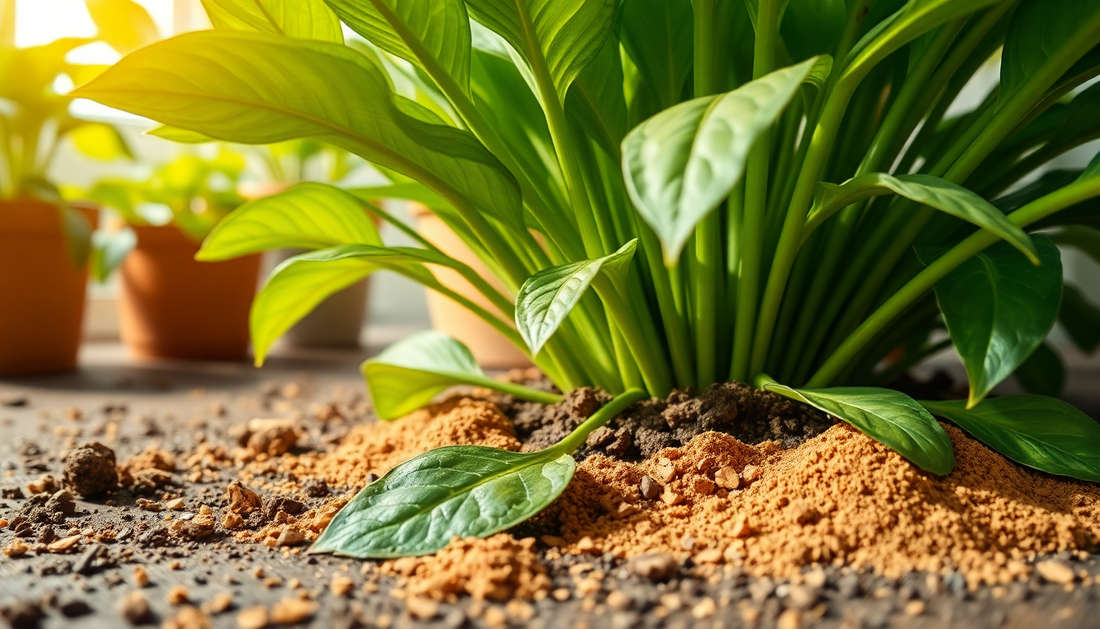
How to Use Cinnamon to Protect Indoor Plants from Fungus
As an avid indoor gardener, I've always been on the lookout for natural and effective ways to keep my plants healthy and thriving. One of the most persistent challenges I've faced is dealing with fungal infections, which can quickly wreak havoc on delicate foliage and stunt the growth of my beloved plants.
After much research and experimentation, I've discovered a simple yet powerful solution: cinnamon. This humble spice not only adds a warm, fragrant touch to baked goods, but it also possesses remarkable antifungal properties that make it an invaluable ally in the fight against plant diseases.
The Power of Cinnamon
Cinnamon is a versatile spice that has been used for centuries in various culinary and medicinal applications. What many people don't realize is that it also has a remarkable ability to inhibit the growth of fungal pathogens. This is due to the presence of cinnamaldehyde, the primary active compound in cinnamon, which has been shown to exhibit potent antifungal activity.
Studies have demonstrated that cinnamon can effectively combat a wide range of fungal species, including those that commonly afflict indoor plants, such as powdery mildew, botrytis, and root rot. By incorporating cinnamon into your plant care routine, you can create a natural barrier that helps protect your greenery from these harmful fungal invaders.
Preventing Fungal Infections
One of the key advantages of using cinnamon for plant care is its ability to act as a preventative measure. Rather than waiting for a fungal problem to arise, you can proactively apply cinnamon to your plants to inhibit the growth of fungi before they have a chance to take hold.
Here are some simple steps you can take to incorporate cinnamon into your plant care routine:
Cinnamon Soil Drench
Mix a teaspoon of ground cinnamon into a cup of water, and use this solution to water your plants. The cinnamon will be absorbed into the soil, creating an inhospitable environment for fungal spores.
Cinnamon Foliar Spray
Combine a tablespoon of cinnamon with a cup of water, and use a spray bottle to mist the leaves and stems of your plants. This helps create a protective barrier on the plant's surface, deterring fungal growth.
Cinnamon Powder Application
Sprinkle a light dusting of ground cinnamon around the base of your plants, on the soil surface. This creates a physical barrier that can prevent fungal spores from taking root.
Cinnamon Stick Placement
Place whole cinnamon sticks near the base of your plants or in the soil. As the sticks slowly release their antifungal compounds, they help maintain a healthy, fungus-free environment.
Cinnamon for Propagation
When propagating new plants from cuttings or seeds, dip the ends in cinnamon before planting. This helps protect the delicate roots and stems from fungal infections during the crucial early stages of growth.
Treating Existing Fungal Infections
If you've already noticed signs of fungal infection in your indoor plants, such as discolored leaves, powdery residue, or wilting, cinnamon can also be used as a curative measure.
Simply apply a generous dusting of ground cinnamon directly to the affected areas of the plant, ensuring that the cinnamon comes into direct contact with the fungal growth. The antifungal properties of cinnamon will help to inhibit the spread of the infection and promote the plant's natural healing process.
It's important to note that while cinnamon is highly effective, it's not a one-size-fits-all solution. Depending on the severity of the fungal infection, you may need to combine cinnamon treatment with other remedies, such as improving air circulation, adjusting watering schedules, or removing severely damaged foliage.
Cinnamon for Overall Plant Health
In addition to its antifungal properties, cinnamon can also provide a range of other benefits for your indoor plants. As a natural source of essential nutrients, cinnamon can help to promote healthy growth and vibrant foliage. It's also been shown to have a stimulating effect on root development, which can be particularly useful for young or struggling plants.
Furthermore, the pleasant aroma of cinnamon can help to deter certain pests, such as aphids and spider mites, from taking up residence in your indoor garden. This makes cinnamon a versatile and eco-friendly solution for maintaining the overall health and well-being of your plants.
Conclusion
Incorporating cinnamon into your plant care routine is a simple, natural, and highly effective way to protect your indoor plants from the ravages of fungal infections. Whether you're using it as a preventative measure or a curative treatment, cinnamon's antifungal properties make it an invaluable tool for the conscientious indoor gardener.
So, the next time you find yourself battling a stubborn fungal problem, reach for the cinnamon and let this humble spice work its magic. Your plants will thank you for it, and you'll be well on your way to a thriving, healthy indoor oasis.






No comments